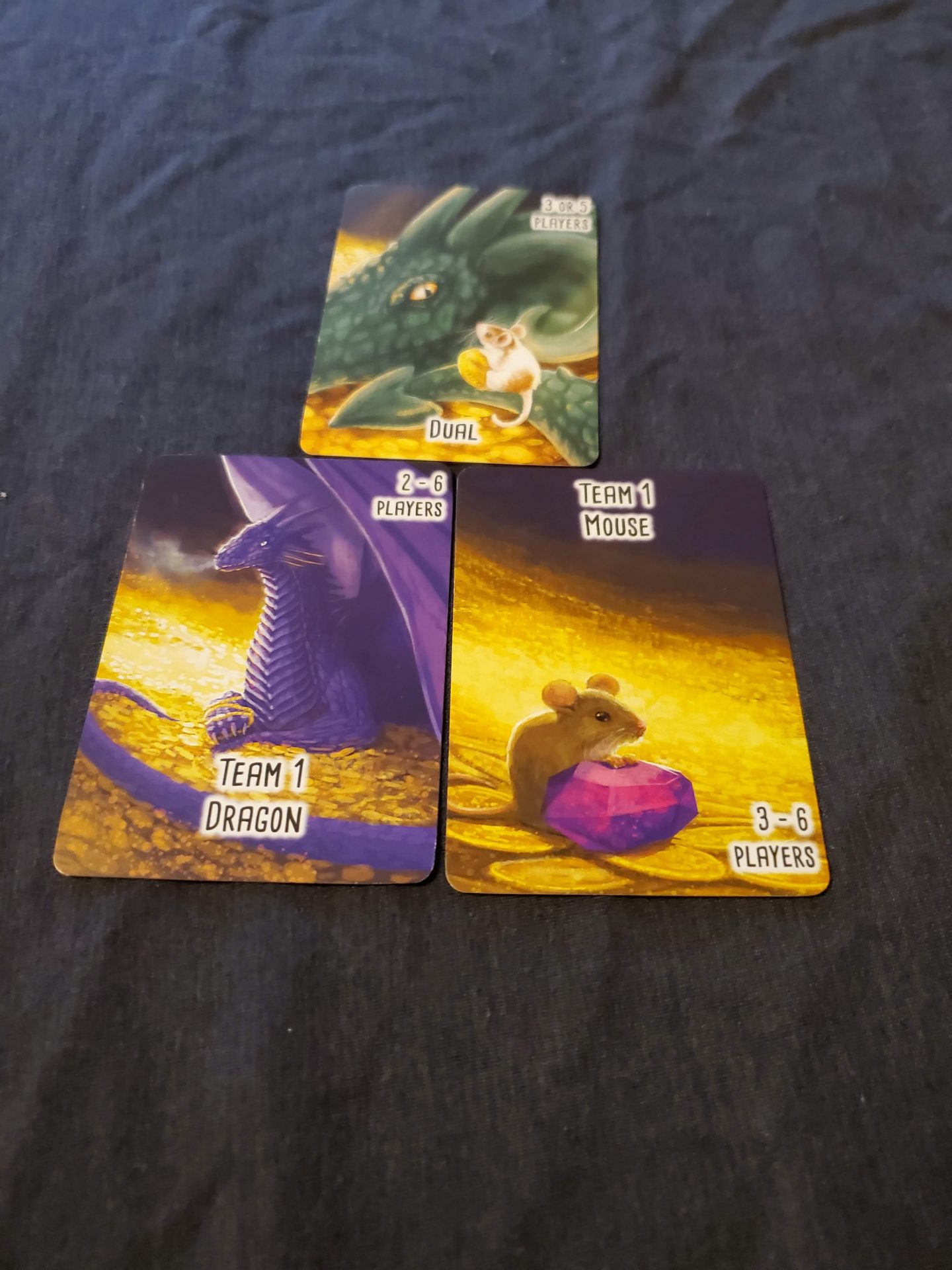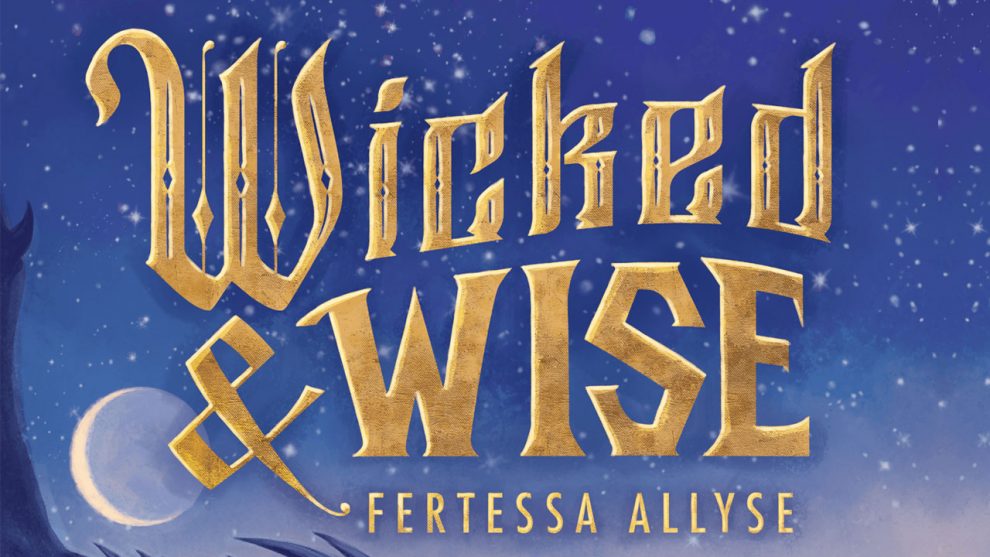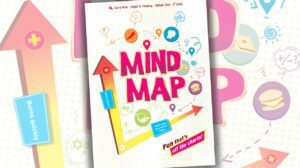Disclosure: Meeple Mountain received a free copy of this product in exchange for an honest, unbiased review. This review is not intended to be an endorsement.
I went to college at the University of Virginia, in Charlottesville. Great school. Great people. Great campus. As a game player, nothing in life was better than living with five other guys who loved playing games of all kinds…and when classes were over, those guys were always available all the time. (Well, most of the time; girlfriends, road trips and UVA basketball also factored into schedules!)
During my second year at UVA, every night we played one of two games: NHL ‘95 (The EA Sports classic on the SEGA Genesis) or the card game Spades. The latter became my introduction to trick-taking games: card games where the winner of each hand would “take the trick”, or the cards just played on that turn.
The best part of Spades is the bidding process. In a round of 13 tricks/turns , you and your partner have to come up with a bid for how many tricks you think you’ll win each round. However, if you don’t take as many tricks as you bid, you lost a lot of points…and the best rounds are those where both teams think they can take the majority of that round’s tricks – someone’s always going to fail!
Lots of laughing, yelling and general mischief took place back in the college days on game night. When Weird Giraffe Games offered Meeple Mountain the chance to review their upcoming trick-taking game Wicked & Wise (designed by Fertessa Allyse, the designer behind Book of Villainy), I jumped at the chance to relive some of those old glory days of taking tricks with good friends.
Wicked & Wise offers many of those special moments from the college days, but provides thrills in ways different from I was expecting.

Some Unlearning Required
As a trick-taking veteran, the rules for Wicked & Wise are important to discuss here because many of the things you expect in a game of this type are a bit different.
Wicked & Wise is admittedly light on theme once you begin playing, but here’s the setup. Dragons (Wise!) have decided to begin working with Mice (Wicked!) to expand their dragon hoards. To do this, they have decided to challenge other Dragons to a game of cards.
Each two-person team has a designated Dragon player and a designated Mouse player, whose roles do not change during the course of the game. Essentially, Dragons are trying to win—or maybe even lose—tricks. Mice are the sneaky backroom dealers who want to find ways to give Dragons everything they need to succeed.
In each of the three rounds of Wicked & Wise, teams have a number of goals they must meet in order to score coins at the end of the round. These coins, which can also be earned on each trick through other card powers, determine the winner at the end of the third and final round.
In each round, Dragon players have a hand of 10 cards and Mice have a hand of 7 cards. Dragons will then draw 4 cards from their team’s goal deck and review options for the upcoming round. Based on the round number, level of confidence and their hand, Dragons will then pass 2-4 of those goal cards to their Mouse partner, who will then choose 1-3 of those goals to attempt during the round.
Similar to the best part of a game of Spades—bidding—goal selection is where you’ll get a fun moment with your partner in Wicked & Wise. As you debate which goals to tackle during the round (possibly debate, I should say; I’ll come back to this later), there’s a risk: any goal that you complete will earn you a certain amount of coins based on the number of teams in the game. Failed goals will cost you a certain number of coins, rounded down.
Each round of Wicked & Wise features 5 tricks, or turns; on a turn, one dragon plays a card, then all other players have to follow suit with the suit that was led. Cards in a suit range from a low of 1 to a high of 15; these suits and numbers matter for the Dragons, because only their played cards factor into who wins each trick. Each card also has rules-breaking text on the bottom that can only be utilized by the Mice players; these help swing better cards, points and other powers to help Dragons win tricks or Mice prep for future turns.
On a given trick, one Dragon leads, then other Dragons play one card. Next, all Mice will play one card, using the text at the bottom of that card to grant that team an ability. Lastly each Dragon will play one additional card, often one that may have been given to them by their Mouse partner, to close out a trick. During a trick, if a player no longer has the suit that was led in their hand, they can play any card they would like.
The winner of the trick will be the Dragon who has played the highest card in a suit, or the Dragon who played the highest trump card during the trick. Trump cards are in a separate deck from the basic cards, but can be drawn with abilities used by Mice. Then the winner has an option: take 2 coins, or draw 2 Treasure cards, keeping 1. Treasure cards are one-turn-use options which can be used before future trick-taking turns begin to give that team more options to gather coins. (In my experience, save for the 15th and final trick of the game, it’s best to take treasure almost every time because treasure usually nets a player more than 2 coins.)
When a round ends, goal completion is calculated and coins are awarded or handed back to the general supply. If you’re not in the third round, Dragons discard any remaining cards from hand. Mice can pass up to 4 of their cards to their partner to help them out for the next round, usually to pass higher cards to their partner in order to help win tricks. Then everyone draws up to their hand limit and the team which is losing goes first in the next round.

Table Talk!
I mentioned earlier in the review that sometimes you will want to plan out a round with your partner based on the cards you have in your hand. Wicked & Wise is smart to address this with Table Talk cards, which are picked before the start of gameplay.
There are 3 options for when teammates can discuss their strategy:
- When choosing your goal cards: this is definitely the “easy” setting for Wicked & Wise because you’ll score the majority of your points by achieving goal cards. This allows you to huddle with your partner to plan out what fits best based on what partners have in hand.
- By asking or answering 1 yes or no question per trick. This one is interesting; it allows for teams to stay on track with their goals on a trick-by-trick basis, but not when picking their goals. This is probably slotted as the medium difficulty for talking over the table.
- When NOT choosing your goals: this essentially means you can talk about anything you want during the entire game except for when the Dragon is deciding which goal cards to pass to their Mouse partner. I’m not sure how I feel about this one; I like that this option is included, but we haven’t used it in a game yet because people tend to want to make the game easier by picking goals together or harder by not doing that and allowing an exception of one question per trick.
My first two games of Wicked & Wise were played with Spades veterans (my parents, and a game group here in Chicago), and in both games players preferred to use the first Table Talk option above. I think that is the best setting, but to spice things up over multiple plays I will likely stick with the one question per trick option.

Here’s the Trick
Wicked & Wise is a fun game, but it is interesting to land on why.
Team games are always fun and I loved the planning that comes from sorting out how to attack each round with a partner. There’s always drama as you get down to the final trick of a round and there’s a lot of winking at a partner during Wicked & Wise as players constantly consult their goals or when a Mouse unleashes a great card to help their Dragon partner.
The prototype components? I’ll take the high road here and say I’m excited to see what the final version of Wicked & Wise looks like. The coins, card stock, artwork and lead-player token are all fine. I recommend poker chips to replace the coins. That will also help during gameplay because some goals depend on knowing how many coins other teams have; with poker chips, that’s really easy to do from across the table.
In my experience, games of Wicked & Wise take 45-60 minutes no matter how many players are playing. That’s a little long, but 3 rounds feels like the right amount of rounds. I could see some players house-ruling this into a 2-round affair, which could be knocked out in 30 minutes with players who all knew what they were doing. Turns are quick, and clean-up between tricks is quite easy; as hands get smaller, decisions get even easier because players must play what was led if they have that suit in their hand.
Wicked & Wise plays anywhere from 2-6 players. It’s quite a different experience if you play with 2, 3 or 5 players, where a shared Mouse hand or an open “Dual” hand exists for the odd player out. With 4 or 6 players, you get what feels like the core Wicked & Wise experience, with 2-3 teams.
To the credit of the designers, the rulebook indicates that the Dual role should be saved for Wicked & Wise vets who have played a few times. The Dual role alone breaks the core game: their Dragon cards stay in hand, while their Mouse cards are public, save for any trump cards.
This means goals change significantly because everyone knows at least 1 of the cards which will be played each trick: the Dual’s Mouse card. For example, some Treasure cards give points to the team who collects cards under or over a certain number during a trick. If I know a Dual has only 1 star card left, and it fits my treasure goal, I’m going to play it!
My wife and I had similar issues with our 2-player game, where both of us played as Dragons with a single, shared, face-up Mouse hand. In some ways, this makes goals on your Treasure cards easier; when you know your “partner” has certain cards, it’s easier to score a pair of cards if your Treasure gives you coins for this specific requirement. The 2-player game is quick, and still has meaty decisions particularly during goal selection, but it’s a decidedly different game when you are playing a partner game without a human partner.
My advice? Play Wicked & Wise with exactly 4 players. There’s fun to be had in the other formats but I think the game is just cleaner, quicker, and makes more sense at 4 players.

Tricks…It’s a Treat!
Wicked & Wise is a strategic trick-taking game for gamers; I wouldn’t introduce Wicked & Wise to those new to the hobby. I would play this with family, particularly those used to playing trick-taking games, up through medium-weight strategy gamers. I would also play this with my seven-year-old daughter, particularly in games where she was the Dragon on a team and we used the beginner goal cards included in the box to help replace cards in the standard goal decks. (There are rule variants included for playing with younger players, for those looking to turn this into a family affair.)
The game really misses thematically; at no point could anyone I played with understand why Dragons and Mice were the pairing, or the fact that there really is no dragon or mouse art in Wicked & Wise. Even the trump suit misses on the opportunity to capitalize on dragon themes; this is a trick-taking game, pure and simple. I’m really hoping the theme is strengthened in the retail version of the game.
But the fun factor is there, especially with other players who love Hearts, Spades, or other more recent trick-taking games like The Fox in the Forest and The Crew: The Quest for Planet Nine. If you have a gaming group of 4 or more players who can get this to the table regularly, I highly recommend the gameplay in Wicked & Wise. You can check out the Kickstarter campaign right here!












Add Comment